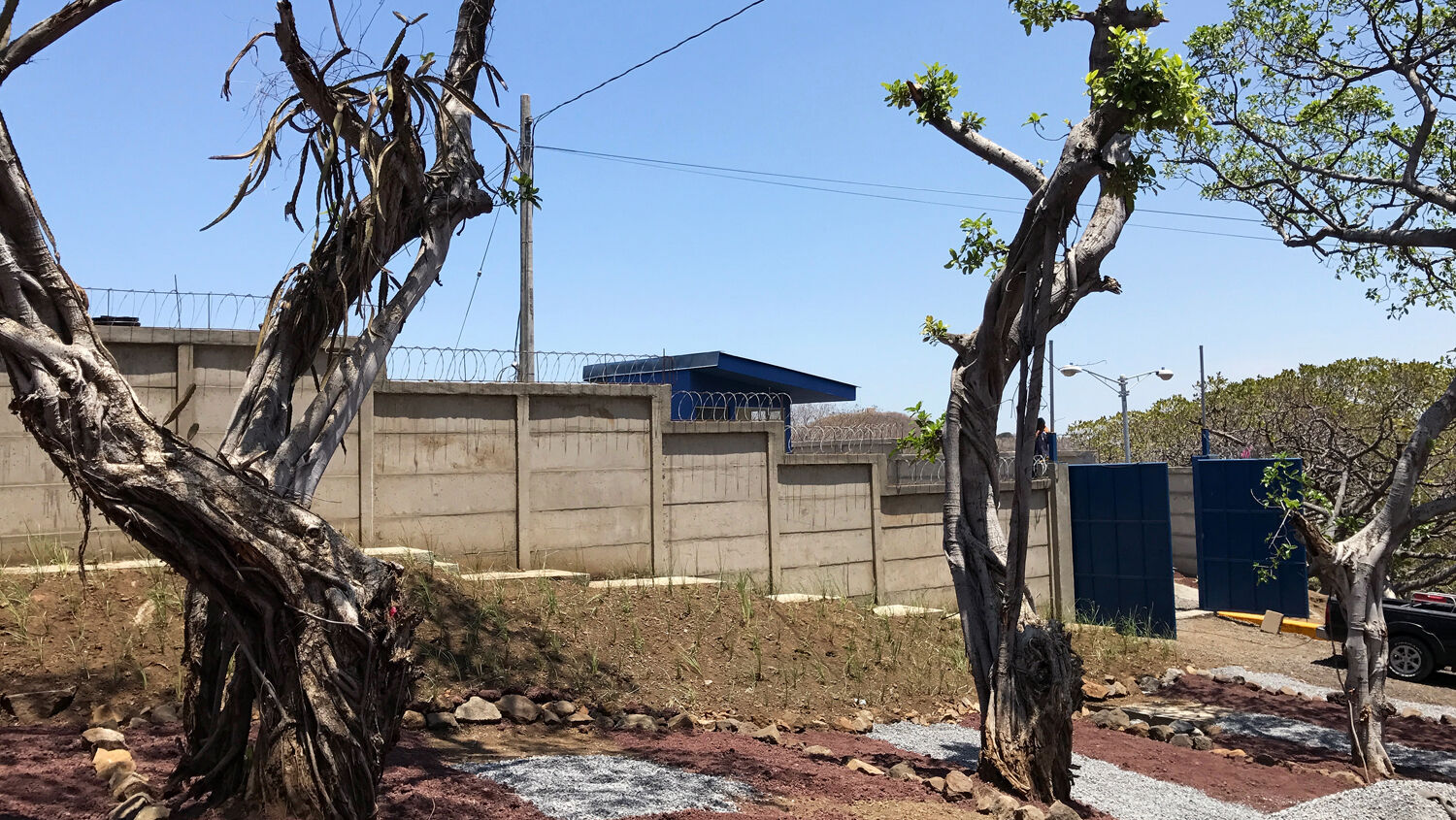
Is Russia Building a Spy Base in Nicaragua?
Russia may have opened a new military intelligence station in Nicaragua, the Washington Post reported on Saturday, citing anonymous United States officials. The Post wrote:
On the rim of a volcano with a clear view of the U.S. Embassy, landscapers are applying the final touches to a mysterious new Russian compound.
Behind the concrete walls and barbed wire, a visitor can see red-and-blue buildings, manicured lawns, antennas and globe-shaped devices. The Nicaraguan government says it’s simply a tracking site of the Russian version of a gps satellite system. But is it also an intelligence base intended to surveil the Americans?
Russia’s presence in Nicaragua goes far beyond just one possible listening post. The Post continued:
Three decades after this tiny Central American nation became the prize in a Cold War battle with Washington, Russia is once again planting its flag in Nicaragua. Over the past two years, the Russian government has added muscle to its security partnership here, selling tanks and weapons, sending troops, and building facilities intended to train Central American forces to fight drug trafficking.
The Russian surge appears to be part of the Kremlin’s expansionist foreign policy. … “Clearly there’s been a lot of activity, and it’s on the uptick now,” said a senior U.S. official familiar with Central American affairs, who spoke on the condition of anonymity to discuss the sensitive situation ….
Current and former U.S. officials suspect that the new Russian facilities could have “dual use” capabilities, particularly for electronic espionage aimed at the United States. Security analysts see the military moves in Central America as a possible rebuttal to the increased U.S. military presence in Eastern Europe, showing that Russia can also strut in the United States’ backyard.
In response, the U.S. is sending an increasing number of officials familiar with Russia and with the Russian language to Nicaragua.
Russia and Nicaragua resumed their old Cold War friendship in 2006 when Russia’s old Cold War partner, Daniel Ortega, was elected president, after a long stint out of office. Russia swooped in, first with economic aid, then with military ties.
In 2015, Nicaragua agreed to allow Russian ships to dock at its ports. Russia has been supplying personnel carriers, rocket launchers and even T-72 tanks to the country.
Nicaragua is now one of many states Russia is courting in Latin America. The Post wrote:
[I]n the past decade, and particularly under Putin’s rule, Russia has sought a bigger world footprint. In Latin America, Russia has sold billions of dollars in weapons to Venezuela. Russian helicopters are used by militaries in Peru, Argentina and Ecuador. While U.S. and Chinese trade in Latin America is far larger, Russia has intensified economic ties with several countries, including Mexico and Brazil.
However, Venezuela is going through an economic collapse, and Cuba is drawing closer to the U.S. and Europe, leaving Nicaragua as Russia’s new best friend.
“The most fruitful political relationship that Russia has, and where it’s made its greatest advances, has been Nicaragua,” said Evan Ellis, an associate professor of Latin American studies at the U.S. Army War College.
“The United States and countries of the region should be concerned,” said Juan Gonzalez, who was a deputy assistant secretary of state for the Western Hemisphere under former U.S. President Barack Obama. “Nicaragua offers a beachhead for Russia to expand its intel capabilities and election meddling close to the United States.” Until the build-up in Nicaragua, Gonzalez had dismissed claims that Russia posed a threat to the region.
Meanwhile, Russian government-owned Russia Beyond the Headlines reported that a 100-strong Russian parachute company may participate in a joint exercise in the country. “Experts believe the decision to hold the drills in Nicaragua is related to Russia’s desire to restore relations with countries in the region and to strengthen its influence on America’s ‘underbelly,’” boasted the Russian propaganda mouthpiece.
The latest print issue of the Trumpet magazine stated:
Dominance of the Caribbean basin is integral to America’s safety and essential to its ability to project power globally. If a rival power were able to establish a significant presence in the Caribbean, it could threaten the American heartland. The Caribbean is also key to United States’ trade. The majority of all U.S. waterborne foreign trade travels to or from U.S. ports on the Gulf of Mexico. When you include goods traveling through the region from other ports, no other part of the world is more essential to America’s trade.
This is why more Americans ought to be concerned that foreign powers are rapidly moving into the Caribbean, as well as into South America itself.
Former President Barack Obama practically invited these powers into the hemisphere, as his administration declared that it had ended the Monroe Doctrine. This pillar of American foreign policy sought to keep foreign powers well away from the American mainland. Yet in 2013, Secretary of State John Kerry announced that the “era of the Monroe Doctrine is over.”
Russia, China and Europe are making deep inroads in the region. This is a region that security experts have warned about for well over a century. Yet America is standing by while foreign powers set up shop in its “underbelly.” For more on the dangers America faces from this region, read “Latin America: Front Line of Trade War.”
